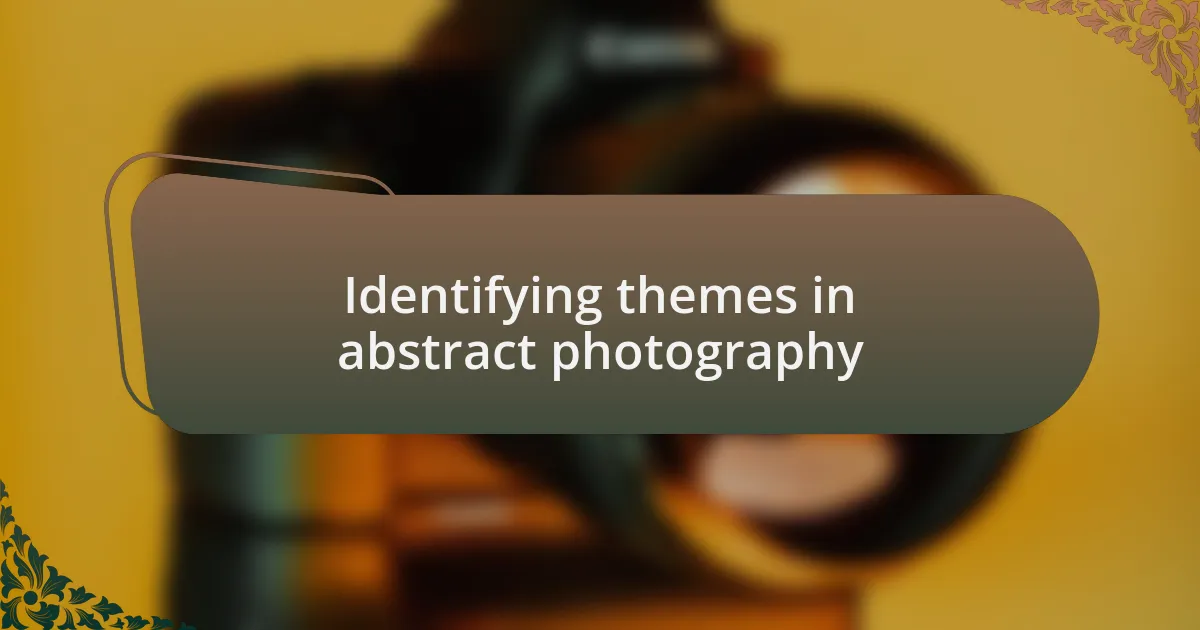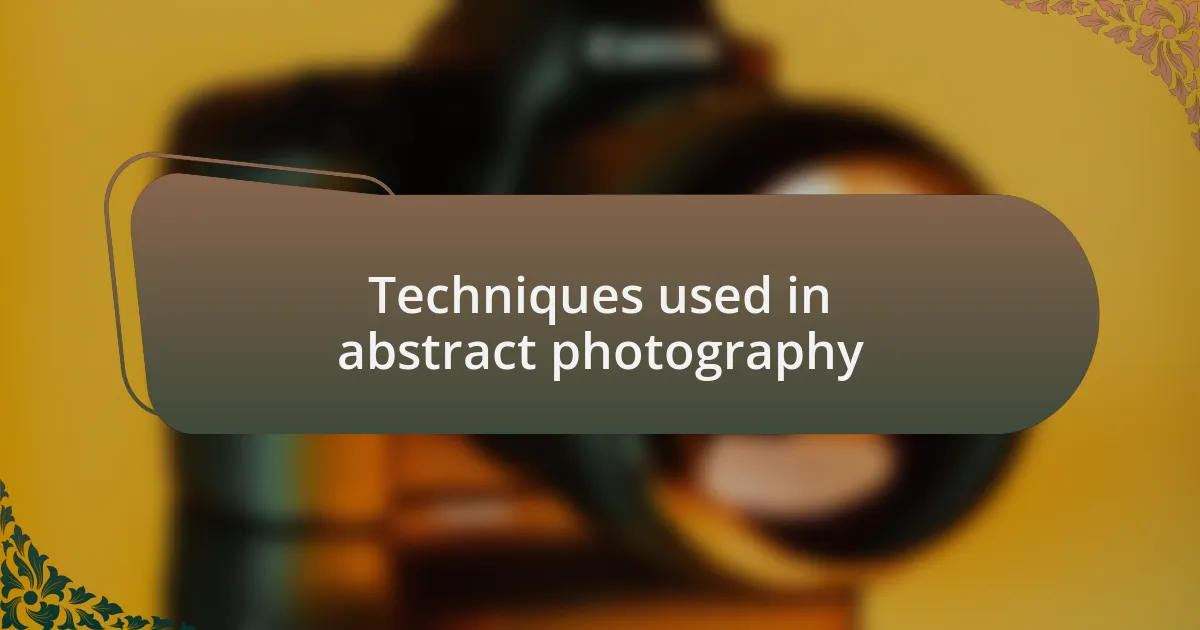Key takeaways:
- Abstract photography reflects both the artist’s emotional state and external influences, such as music and nature.
- Themes in abstract photography, like movement and color, reveal personal experiences and evoke different emotions for viewers.
- Techniques like intentional camera movement, layering exposures, and focusing on texture are essential for creating dynamic abstract images.
- These elements allow for rich narratives in photography, inviting viewers to engage and interpret the artwork personally.

Understanding abstract photography influences
Understanding abstract photography influences can be a deeply personal experience. Each shot often reflects not only the artist’s perception but also their emotional state at the moment of capture. I remember a time when I was feeling particularly overwhelmed; during my photography session, the swirling clouds and distorted reflections in the water resonated with my emotions, leading to a series of abstract images that conveyed my inner turmoil.
Moreover, influences can stem from a wide array of sources outside of traditional art. Music, literature, and even nature shape how we view and capture the world abstractly. I once attended a jazz concert, and the improvisational style sparked an idea in my photography. I aimed to mirror that spontaneity through my lens, resulting in bursts of color and shapes that felt alive and unrestrained.
It’s fascinating to consider how personal experiences and external inspirations intertwine in abstract photography. When I revisit certain images, I am often taken back to the moment of creation. Was it the dance of light or the play of shadows that influenced my choices? This exploration of influences not only enriches the photographs but also invites viewers into a narrative that is both subjective and universal.

Identifying themes in abstract photography
Identifying themes in abstract photography often requires a keen sensitivity to the subtleties of composition and emotion. I find that certain patterns manifest themselves over time; for example, I’ve noticed a recurring theme of movement in my work. Whether it’s a blurred figure in a bustling city or the fluidity of water, these images tell stories of change and transformation that resonate deeply with my experiences.
Color is another powerful theme that can define an abstract piece. I recall a specific afternoon spent outdoors, experimenting with light and shadows. As the sun dipped below the horizon, the vibrant hues began to blend together, creating a tapestry of emotions—from warmth to melancholy. Each color spoke to a different aspect of my journey, allowing viewers to connect to their own feelings while interpreting the image.
Sometimes, I wonder how viewers perceive themes in my abstract works. Do they see the tension I felt in a chaotic urban landscape, or do they instead feel a sense of calm in the chaos? This introspection reveals that themes are not always explicit; they often reside in the spaces between the lines, waiting to be discovered by those willing to look closely.

Techniques used in abstract photography
Abstract photography is all about pushing boundaries, and one technique I often use is intentional camera movement (ICM). Moving the camera while the shutter is open can create beautiful distortions that evoke a sense of motion and energy. I remember one evening in a park, where I swept my camera across blooming flowers, capturing swirling colors. The result was a vibrant blur that emitted a sense of life, much different from a standard still photo. Have you ever tried it? The surprise of the results can be quite exhilarating.
Another technique that captivates me is layering multiple exposures. It’s like painting with light and time, where different elements come together to create a single image that tells a complex story. I once experimented with layering shots of urban architecture and flowing water, blending the stark lines of concrete with soft organic shapes. The outcome was an intriguing conversation between the rigid and the fluid. Do you think about the stories an image can tell when you bring various elements together? I find that this method opens up a world of possibilities, inviting viewers to explore the narrative behind the composition.
Texture is also a critical technique in abstract photography. Capturing the intricate details of surfaces can transform an everyday object into something extraordinary. I recall a day spent photographing tree bark up close, focusing on its patterns and roughness. The resulting images took on a life of their own, inviting viewers to experience the tactile quality of nature through their screens. Can texture change the way we perceive familiar subjects? I’ve seen it provide a fresh perspective, encouraging deeper engagement with the world around us.